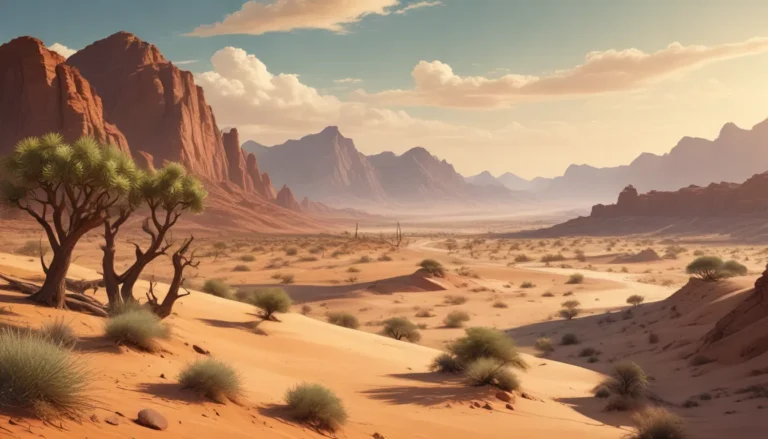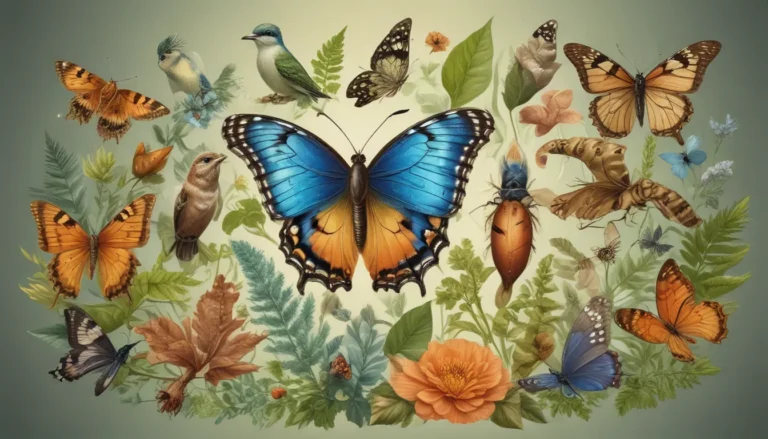A Note About Images: The images used in our articles are for illustration purposes only and may not exactly match the content. They are meant to engage readers, but the text should be relied upon for accurate information.
Welcome to the enchanting world of biodiversity hotspots, where nature’s wonders flourish in abundance. These unique regions are teeming with a dazzling array of plant and animal life, each contributing to the rich tapestry of biological diversity that makes our planet truly extraordinary. Join us as we embark on a captivating exploration of the astounding facts about biodiversity hotspots, shedding light on the importance of these precious areas for the health and sustainability of our planet.
Delving into Biodiversity Hotspots
Biodiversity hotspots are defined by their exceptional levels of endemic species, which are found nowhere else on Earth. These hotspots not only dazzle with their diversity but also serve as crucial sanctuaries for countless species, protecting them from the brink of extinction and preserving the delicate balance of ecosystems. By safeguarding these areas, we can ensure the continuity of life’s intricate web and secure a brighter future for generations to come.
Unveiling the Marvels of Biodiversity Hotspots
- Biodiversity hotspots cover a mere 2.3% of the Earth’s land surface yet harbor over half of all plant species and 42% of terrestrial vertebrate species, underscoring their pivotal role in preserving a myriad of flora and fauna.
- These hotspots are facing mounting threats from human activities, emphasizing the urgent need to safeguard them to uphold Earth’s ecosystems and unlock potential advancements in medicine.
Exploring the Rich Tapestry of Biodiversity Hotspots
The term “biodiversity hotspot” was coined by Norman Myers in 1988, initially identifying 10 hotspot regions that have since expanded to 36 as more areas were acknowledged for their unique biodiversity. These regions are characterized by high levels of endemism, hosting species that are exclusive to their particular habitats and highlighting their irreplaceable value in conservation efforts.
Marvels of Biodiversity Hotspots
- The Amazon Rainforest in South America stands as the largest biodiversity hotspot globally, boasting an astonishing 16,000 tree species, representing a significant portion of Earth’s botanical wealth.
- Madagascar emerges as a biodiversity hotspot adorned with a treasure trove of unique plant and animal species, with an astounding 90% of its wildlife found nowhere else on the planet.
Protecting the Guardians of Biodiversity
Biodiversity hotspots are not evenly distributed across the globe, with concentrations in tropical regions like the Caribbean, Central and South America, Africa, and Southeast Asia. However, these vital regions face grave threats from human-induced activities such as deforestation, habitat destruction, pollution, and climate change, resulting in the rapid loss of species and ecosystems.
Sustaining Earth’s Balance
Biodiversity hotspots play a vital role in providing essential ecosystem services such as water purification, pollination, and climate regulation. Preserving these hotspots is paramount for upholding the resilience and functionality of Earth’s ecosystems, safeguarding crucial services that support life on our planet.
Preserving Treasures of Biodiversity
- The Western Ghats and Sri Lanka biodiversity hotspot in India ranks among the world’s top biodiversity hotspots, housing a multitude of endemic species, including iconic wildlife like the Bengal Tiger and the Asian Elephant.
- The Cape Floristic Region in South Africa, though the smallest recognized hotspot, dazzles with its unparalleled plant diversity, boasting the highest concentration of plant species within its boundaries.
Embracing the Harmony of Biodiversity
Biodiversity hotspots not only serve as bastions of biodiversity conservation but also uphold the livelihoods of local communities. Many indigenous groups rely on the resources and ecosystem services provided by these hotspots for their sustenance, emphasizing the profound interconnectivity between humans and nature.
Nurturing Diverse Ecosystems
The Wallacea biodiversity hotspot, nestled between Bali and Lombok in Indonesia, stands out for its remarkable marine biodiversity, housing myriad coral species, fish, and other marine organisms. These hotspots act as sanctuaries for species, enabling them to adapt and thrive amidst a changing environment.
Embracing the Essence of Biodiversity
The Mediterranean Basin biodiversity hotspot is renowned for its rich cultural heritage and biodiversity, harboring iconic species like the European Mouflon and the Mediterranean Monk Seal. These hotspots represent dynamic landscapes that evolve over time, responding to shifts caused by climate change and human activities.
Gatekeepers of Biodiversity Conservation
Biodiversity hotspots are focal points for conservation efforts led by organizations such as Conservation International and the World Wildlife Fund (WWF). These organizations strive to safeguard and nurture these critical regions and the species that call them home, ensuring the preservation of Earth’s irreplaceable biodiversity.
Enchantments of Biodiversity
- The Sundaland biodiversity hotspot in Southeast Asia captivates with its diverse primate population, including the majestic orangutan and the quirky proboscis monkey. This hotspot also teems with a plethora of plant species, many of which possess invaluable medicinal properties.
Sustaining Earth’s Legacy
Biodiversity hotspots are integral to global initiatives aimed at halting the alarming decline of biodiversity worldwide. By championing the protection of these regions, we can uphold Earth’s unparalleled wealth of species and ecosystems, safeguarding the foundation of life on our planet.
Concluding Thoughts on Biodiversity Hotspots
In conclusion, biodiversity hotspots are vital sanctuaries of species diversity facing threats from human actions. These extraordinary regions harbor a wealth of plant and animal life, supporting essential ecosystem functions. By cherishing and preserving biodiversity hotspots, we can shield myriad species from extinction, protect vital ecological processes, and secure a thriving future for our planet.
Frequently Asked Questions
-
What defines a biodiversity hotspot?
A biodiversity hotspot is an ecologically significant region characterized by an exceptional concentration of plant and animal species, many of which are exclusive to that area. -
How many biodiversity hotspots exist globally?
There are currently 36 recognized biodiversity hotspots worldwide, each contributing to the conservation of unique species and ecosystems. -
Why are biodiversity hotspots essential?
Biodiversity hotspots play a crucial role in maintaining ecological balance, supporting vital ecosystem functions, and offering invaluable resources such as clean water, food, and medicinal plants. -
What are the primary threats to biodiversity hotspots?
Major threats to biodiversity hotspots include habitat destruction, climate change, pollution, invasive species, resource overexploitation, and human encroachment. -
How can we safeguard biodiversity hotspots?
We can protect biodiversity hotspots through various conservation strategies, including establishing protected areas, promoting sustainable land use practices, fostering education and awareness, and involving local communities in conservation efforts. -
Can biodiversity hotspots recover from damage?
While human activities can inflict severe damage on biodiversity hotspots, concerted conservation efforts can facilitate their recovery and restore their ecological richness. -
How can individuals contribute to biodiversity hotspot conservation?
Individuals can support biodiversity hotspot conservation by backing local conservation organizations, adopting sustainable lifestyles, advocating for responsible policies, and raising awareness about the significance of biodiversity conservation.
Embracing a World of Wonder
Our journey through the breathtaking realm of biodiversity hotspots unveils the astounding richness of nature’s splendor and the critical significance of preserving these precious regions. As we strive to protect and nurture these natural treasures, we embark on a collective mission to safeguard Earth’s unparalleled biodiversity and sustain the intricate web of life that sustains us all. Join us in embracing the wonders of biodiversity hotspots and championing a future where nature thrives in harmony with humanity.






